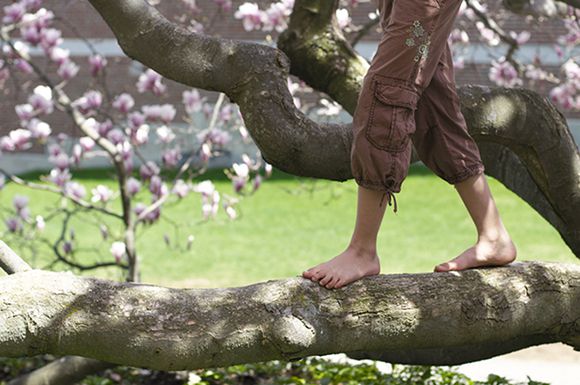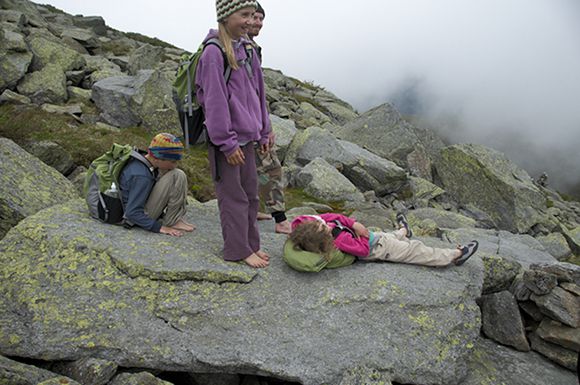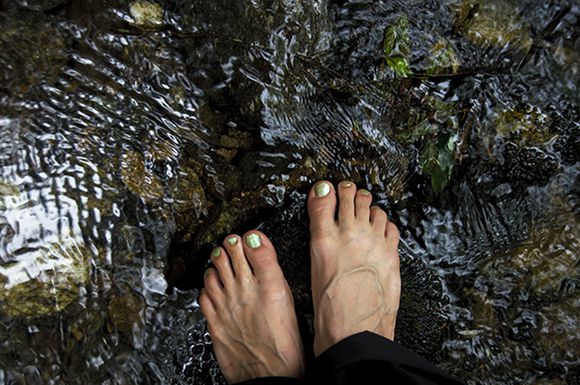You see a lot of talk in minimalist circles all over the web about running form. It is widely acknowledged that in order to reduce injury and maximize health we not only need to minimize footwear, but that we need to become students of form. If we don't, we are still at risk of getting injured.
There is a lot of content on the topic of proper running form, however nobody seems to be spending much time talking about walking. Often when I see walking mentioned, it is just a footnote in the din of running chatter.
While I do enjoy running, it isn't the whole picture of my life. On a daily basis, I spend much more of my time walking, hiking, and backpacking. I believe that gait is really important for those activities as well, and that we need to spend more time thinking about the bigger picture of natural human locomotion.

When I wrote my series The Case for Minimalist Footwear, I got a lot of flac from some experts on walking. In my articles I stated that I believed that a forefoot landing was the "ideal" walking form while the opposition stated that it was unnatural, inefficient, and that it would lead to injury. These days, I am a little more balanced in my opinion on the topic. I now believe that we are both right, and that the gait we use really depends on a large number of factors.
Motivators
Evolutionary psychologists state that humans (probably most animals) have three primary motivators that drive decision making (at the subconscious level):
- They seek pleasure
- They avoid pain
- They conserve energy
That is why high calorie food tastes pleasurable, sex feels good, poking ourselves with sharp sticks hurts, and we love dishwashers. These three simple motivators help us to successfully navigate our world as a species. They are also primarily responsible for our some of our biggest problems: we are (for the most part) lazy, sick, and fat. What we can infer from this is that, when held in perfect balance in the natural world those motivators work to help us succeed. However in an unnatural world where the balance is skewed, they work against us.
What does this have to do with walking?
In most of my reading I have found that the commonly accepted optimal gait for walking is to land on the heel and roll to the forefoot. That is considered the most energy efficient form of walking, and thus that is why we have evolved to use it.
I believe that is only part of the picture as I have observed at least two additional gait patterns: a midfoot landing and a forefoot landing.
When asked, experts argue that those gaits are less energy efficient and unnatural for walking. If efficiency (i.e. energy conservation) were all that mattered then I might agree. I believe however that those gaits are equally natural and that they have very specific purposes: pain avoidance and stability.

If you take off your shoes and walk on rough, uneven terrain, your body will have increased stability and less pain if you adopt a forefoot or midfoot landing. Try it. Go for a walk over a rocky trail and see what type of gait your body feels comfortable using. If you are like most, you will probably adopt a "tender-foot" strike where you take short steps with a forefoot landing. Your body will be in full-on stability and pain avoidance mode.
I believe that we will use the most efficient gait to some threshold where pain avoidance takes over and we switch to a less painful one. So, when walking on sand, energy efficiency trumps pain avoidance. When walking on rocks, pain avoidance and stability will trump energy efficiency. If you are aware of the difference, you can turn one or the other on/off at will depending on the activity.
In the natural world we had all kinds of different terrain to walk on. Over the course of a day, I would assume that we walked sometimes with a forefoot strike and sometimes with a heel strike. As a result all of the muscles of our feet were well developed for all kinds of gaits. Fast forward to the modern world. Everything is flat and safe and we wear shoes. As a result the gait we adopt for everything is a heel strike and our feet have become under-developed for anything else. We are not used to walking for stability and pain avoidance because we never have to.
Under developed foot muscles and improper movement patterns are large factors in how susceptible we are to injury. If we train our bodies 95% of the time on flat, safe surfaces we are going to have only one gait burned into our brain: a heel-first landing. When we hit the trail hiking or backpacking, we will continue with our heel strike as if we are walking down a sidewalk because that is all we know. When we find ourselves in a sticky/unstable situation we will be ill equipped to deal with it.

Not so long ago I interviewed a barefoot thru-hiker. She wasn't doing it because she was some sort of barefoot purist attempting to prove a point. She ditched the footwear because she was in pain and needed a solution. She didn't spend days on end researching optimal gait patterns and doing drills to re-train her muscle memory. She just took off her shoes and hiked. When I asked her what sort of foot strike she found she used most, this is what she told me:
"Generally come down on the ball of my foot, just lightly setting the heel down briefly. On the flat my feet come down more flat on the side of the foot. Either way I roll off my big toe at each step."
I wonder what the biomechanic experts have to say about that?
What are your thoughts on walking gait?
